Grade 11 Biology, University Preparation
This course furthers students' understanding of the processes that occur in biological systems. Students will study theory and conduct investigations in the areas of biodiversity; evolution; genetic processes; the structure and function of animals; and the anatomy, growth, and function of plants. The course focuses on the theoretical aspects of the topics under study, and helps students refine skills related to scientific investigation.
I've never taught this course, but here is material I think would be useful.
Copyright on all materials on this site is retained by the authors. You are granted a limited license to reproduce these resources for classroom use, provided the copyright notices are not removed. Charging a fee for these resources, or distributing them in any way outside your classroom, is prohibited.
General Biology
E.O. Wilson's Life on Earth
On June 30, 2014, the E.O. Wilson Biodiversity Foundation released the ground-breaking new high school biology textbook E.O. Wilson’s Life on Earth. We believe that education is the most important tool we have to face the challenges confronting our living planet. Life on Earth was created to instruct and inspire students, the future stewards of Earth.
Life on Earth is an iBooks Textbook consisting of 41 chapters in 7 separate units and can be downloaded for free from the iBooks Store. The text provides a complete, original, standards-based, media-rich curriculum to give high school students a deep understanding of all of the central topics of introductory biology.
To create Life on Earth, the E.O. Wilson Biodiversity Foundation brought together a team consisting of educators, writers, multimedia artists, 3D animators trained in science and cinema, and textbook professionals, led by naturalist Edward O. Wilson. The editorial team, headed by Morgan Ryan, worked in full partnership with the Boston-based scientific graphics company Digizyme, Inc, headed by Gaël McGill, PhD, with the goal of creating a cultural landmark—a portal that will introduce students to the grandest story there is, the story of life on Earth, from molecules to ecosystems, from the origin of life to the modern awareness that we control the environment we live in.
Digital textbooks are poised to transform education. The richness and immediacy of vibrant multimedia lessons will transform how students learn and how instructors teach. Our textbook development team is thrilled by the things we are able to deliver that were never possible before. We navigate inside a virtual cell. We take students by helicopter to the Gorongosa landscape in Africa to explain the succession of plants and animals over time.
Today’s high school biology students will be tomorrow’s biochemists, explorers, environmental policy makers, park rangers, and informed citizens. E.O. Wilson’s Life on Earth was created to prepare them for their work.
Life on Earth is a gift from the E.O. Wilson Biodiversity Foundation for students, families, and concerned individuals. It is available now for free in 151 countries and has already been adopted in many classrooms. Our goal for 2014–2015 is to promote its use in classrooms everywhere. If you share our goals for educational and environmental awareness, please support the E.O. Wilson Biodiversity Foundation and join us in promoting a culture of stewardship in which people are inspired to conserve and protect our biological inheritance.
Life on Earth is an iBooks Textbook consisting of 41 chapters in 7 separate units and can be downloaded for free from the iBooks Store. The text provides a complete, original, standards-based, media-rich curriculum to give high school students a deep understanding of all of the central topics of introductory biology.
To create Life on Earth, the E.O. Wilson Biodiversity Foundation brought together a team consisting of educators, writers, multimedia artists, 3D animators trained in science and cinema, and textbook professionals, led by naturalist Edward O. Wilson. The editorial team, headed by Morgan Ryan, worked in full partnership with the Boston-based scientific graphics company Digizyme, Inc, headed by Gaël McGill, PhD, with the goal of creating a cultural landmark—a portal that will introduce students to the grandest story there is, the story of life on Earth, from molecules to ecosystems, from the origin of life to the modern awareness that we control the environment we live in.
Digital textbooks are poised to transform education. The richness and immediacy of vibrant multimedia lessons will transform how students learn and how instructors teach. Our textbook development team is thrilled by the things we are able to deliver that were never possible before. We navigate inside a virtual cell. We take students by helicopter to the Gorongosa landscape in Africa to explain the succession of plants and animals over time.
Today’s high school biology students will be tomorrow’s biochemists, explorers, environmental policy makers, park rangers, and informed citizens. E.O. Wilson’s Life on Earth was created to prepare them for their work.
Life on Earth is a gift from the E.O. Wilson Biodiversity Foundation for students, families, and concerned individuals. It is available now for free in 151 countries and has already been adopted in many classrooms. Our goal for 2014–2015 is to promote its use in classrooms everywhere. If you share our goals for educational and environmental awareness, please support the E.O. Wilson Biodiversity Foundation and join us in promoting a culture of stewardship in which people are inspired to conserve and protect our biological inheritance.
Word Puzzle Booklet
Science has a lot of specialized vocabulary. Some students like word puzzles, so I made a booklet of crossword puzzles and word search puzzles for them. The clues are the definitions from the Nelson Biology 11 textbook. Every chapter has both a crossword puzzle and a word search puzzle, and so does every unit. Answers are given at the back.
The booklet is designed to be printed double-sided, which puts the clues on the left page and the puzzle on the right page.
The booklet is designed to be printed double-sided, which puts the clues on the left page and the puzzle on the right page.
Foldscope: An Origami-Based Microscope
Foldscope is an ultra-affordable field microscope, that you build from common materials such as paper. It is designed to be produced affordably, to be durable, and to give optical quality similar to conventional research microscopes. With magnification of 140X and imaging resolution of 2 micron; Foldscope brings microscopy to new places. Be it your kitchen or a mountain top. Compatible with almost all camera phones.
I backed this project on Kickstarter and just assembled it in the last week. It’s pretty amazing and I’m looking forward to spring when I can bring it along on hikes. I picked up both the deluxe kit for myself and a classroom kit for use at school.
The deluxe individual kit is designed to allow any curious explorer to perform microscopy experiments anywhere at anytime. This kit includes Foldscope (140x, 2um resolution microscope) in a portable and sturdy metal case including a plethora of tools for collecting samples, processing samples, preparing slides and directly collecting data on any cellphone via universal couplers - all possible while working in field settings.
Every deluxe kit includes:
For those looking to get the most for their dollar, we offer the Basic Classroom Kit (BCK), which includes twenty (20) individually packed basic Foldscope kits.
The basic classroom kit is designed to supply a classroom (or other group) of 20 students with a Foldscope for each explorer. Each student receives the essentials (Foldscope, cell-phone coupler, assembly/instruction sheet, carrying pouch, paper and tape slides), and some accessories are provided collectively to be shared amongst the entire class.
The biggest weakness of the classroom kit is that the included cell phone couplers need to be stuck to a cell phone with a double-sided sticker. I need to play around and see if there’s a way of temporarily mounting the couplers. (I can also see them disappearing over the years, so it would be nice to be able to reorder them as spare parts — something that is not currently possible.
I backed this project on Kickstarter and just assembled it in the last week. It’s pretty amazing and I’m looking forward to spring when I can bring it along on hikes. I picked up both the deluxe kit for myself and a classroom kit for use at school.
The deluxe individual kit is designed to allow any curious explorer to perform microscopy experiments anywhere at anytime. This kit includes Foldscope (140x, 2um resolution microscope) in a portable and sturdy metal case including a plethora of tools for collecting samples, processing samples, preparing slides and directly collecting data on any cellphone via universal couplers - all possible while working in field settings.
Every deluxe kit includes:
- One Foldscope Assembly Sheet
- Two 140X micro-lens (one extra lens)
- Four magnetic couplers including cellphone attachment module
- LED illumination module with integrated magnifier for bright-field, dark-field and oblique phase imaging (button cell included)
- Diffuser stickers for light module
- Reusable sealable PVC slides with micro-wells and plastic coverslips
- Calibration/measurement grids
- Nylon filter sheets (5, 25, 100 micron spacings) for cell separation
- Stainless steel mesh filters (1mm and 300um mesh size)
- Custom sample collection ziploc bags
- Two eppendorf tubes for sample collection
- Plastic tweezers and plastic pipettes
- Prepared two test sample slides, three blank slides and slide storage box
- Field notepad with field guide and pencil
- Ultra clear roll of tape for making quick slides
- Complete assembly instruction sheet (English) with folding and usage instructions
- Sturdy metallic box for storage, field work with integrated instrument tray
- Small blunt end metal scissors
- Unique Foldscope Identification sticker code for access to Microcosmos community website (http://microcosmos.foldscope.com)
- Color stickers for labels
For those looking to get the most for their dollar, we offer the Basic Classroom Kit (BCK), which includes twenty (20) individually packed basic Foldscope kits.
The basic classroom kit is designed to supply a classroom (or other group) of 20 students with a Foldscope for each explorer. Each student receives the essentials (Foldscope, cell-phone coupler, assembly/instruction sheet, carrying pouch, paper and tape slides), and some accessories are provided collectively to be shared amongst the entire class.
- Foldscope (140x lens) x 20 sheets
- Cell phone coupler x 20
- Paper/tape slides x 20
- Instruction sheet x 20
- Customizable individual nylon carrying pouch x 20
- 1 LED/Magnifier with bright field, dark field and oblique phase imaging with magnifier (button cell included)
- 1 Slide box with two pre-made glass slides and three blank glass slides and storage box
- 1 Field guide
The biggest weakness of the classroom kit is that the included cell phone couplers need to be stuck to a cell phone with a double-sided sticker. I need to play around and see if there’s a way of temporarily mounting the couplers. (I can also see them disappearing over the years, so it would be nice to be able to reorder them as spare parts — something that is not currently possible.
Diversity of Living Things
Go Extinct!
From the Kickstarter page:
Go Extinct! is a revolutionary evolutionary card game for humans aged 8 and up. The game set includes a deck of 54 beautifully-illustrated animal cards and a simplified, yet accurate, evolutionary tree board used for reference during play. Teaches humans 8 and up how to read evolutionary trees with gorgeous original artwork.
Just like Go Fish, gameplay involves asking other players for cards in order to complete sets of animal groups. When the player has the card requested, the card must be handed over. When the player does not, however, they say…
GO EXTINCT!
At the end of the game, all of the cards are organized into scientific clades, or sets of animals that share a common ancestor. By playing a strategically engaging, yet familiar style of card game, players learn about evolutionary trees and the evidence used to classify land vertebrates. See? You can compete with your friends AND have fun learning science AT THE SAME TIME.
Steam Galaxy has educational pricing, but even cooler one of the Kickstarter stretch goals was a free educational print-and-play version! It’s gorgeous, and gives you explicit permission to make and modify your own versions for classroom use.
Go Extinct! is a revolutionary evolutionary card game for humans aged 8 and up. The game set includes a deck of 54 beautifully-illustrated animal cards and a simplified, yet accurate, evolutionary tree board used for reference during play. Teaches humans 8 and up how to read evolutionary trees with gorgeous original artwork.
Just like Go Fish, gameplay involves asking other players for cards in order to complete sets of animal groups. When the player has the card requested, the card must be handed over. When the player does not, however, they say…
GO EXTINCT!
At the end of the game, all of the cards are organized into scientific clades, or sets of animals that share a common ancestor. By playing a strategically engaging, yet familiar style of card game, players learn about evolutionary trees and the evidence used to classify land vertebrates. See? You can compete with your friends AND have fun learning science AT THE SAME TIME.
Steam Galaxy has educational pricing, but even cooler one of the Kickstarter stretch goals was a free educational print-and-play version! It’s gorgeous, and gives you explicit permission to make and modify your own versions for classroom use.
Phylo — DIY Collectable Card Game
Why?
Phylo is a project that began as a reaction to the following nugget of information: Kids know more about Pokemon creatures than they do about real creatures*. We think there’s something wrong with that. Apparently, so do many others.What?
Phylo is: (1) a card game that makes use of the wonderful, complex, and inspiring things that inform the notion of biodiversity; (2) an exercise in crowd sourcing, open access, and open game development; and (3) FREAKIN’ AWESOME!Who?
The phylo project is the product of the kind and (frankly) amazing contributions of many many individuals who have given art, science expertise, gaming advice, programming chops, and more. A card usually begins its life by someone submitting art to a Flickr pool, but you can also develop new games, help out with programming, or providing general feedback by leaving comments on the blog or forum.How?
You can start quickly by printing yourself a deck and checking out a set of rules. Alternatively, you can just collect and print the cards by going to the card section and “select”ing the ones you like. We’re starting to amass a wide variety of different decks, some of which are high quality and available for purchase!This is a really cool-looking project, spearheaded by David Ng at the UBC Office of Learning Technologies. Check out the web site (http://phylogame.org) for a history of the project, printable card decks, and more information on the project.
Pterosaurs: The Card Game
Not birds! Not even dinosaurs! Pterosaurs were flying reptiles, and the first and largest vertebrates to fly under their own power.
Challenge your friends to this pterosaurs card game. Along the way, explore animals and plants that lived during the Mesozoic Era.
Pterosaurs: The Card Game uses images and information from the vast collections of the American Museum of Natural History in New York City, especially the 2014 special exhibition Pterosaurs: Flight in the Age of Dinosaurs (amnh.org/pterosaurs). The game was co-designed with teenagers in the Museum’s #scienceFTW program and with game designer Nick Fortugno, based on an existing biodiversity card game, Phylo (phylogame.org).
A pre-built Phylo deck with excellent production values.
Challenge your friends to this pterosaurs card game. Along the way, explore animals and plants that lived during the Mesozoic Era.
Pterosaurs: The Card Game uses images and information from the vast collections of the American Museum of Natural History in New York City, especially the 2014 special exhibition Pterosaurs: Flight in the Age of Dinosaurs (amnh.org/pterosaurs). The game was co-designed with teenagers in the Museum’s #scienceFTW program and with game designer Nick Fortugno, based on an existing biodiversity card game, Phylo (phylogame.org).
A pre-built Phylo deck with excellent production values.
Gutsy Card Game
From the American Museum of Natural History:
A game about the microbes that make you... you!
Each of us has a community of microbes that lives in our digestive system. Scientists call this community our gut microbiome. It plays many important roles in our bodies, like helping to digest food, regulating our immune system, preventing diseases, and even affecting our appetites and our emotions.
Many things, like what we eat and drink, who we interact with, and the medicines that we take, influence the kinds of microbes that live in our gut. A diverse microbiome is good for our health!
A simple print-and-play game that reinforces the diversity of our microbiome.
The 54 card deck can be printed on card stock and cut out. A card back is provided as a full-bleed page, which means that you don't have to worry about registration problems when making the deck. Playing time is 15-30 minutes.
A game about the microbes that make you... you!
Each of us has a community of microbes that lives in our digestive system. Scientists call this community our gut microbiome. It plays many important roles in our bodies, like helping to digest food, regulating our immune system, preventing diseases, and even affecting our appetites and our emotions.
Many things, like what we eat and drink, who we interact with, and the medicines that we take, influence the kinds of microbes that live in our gut. A diverse microbiome is good for our health!
A simple print-and-play game that reinforces the diversity of our microbiome.
The 54 card deck can be printed on card stock and cut out. A card back is provided as a full-bleed page, which means that you don't have to worry about registration problems when making the deck. Playing time is 15-30 minutes.
Black Death
Black Death is a humorous and macabre little board game about life in the Middle Ages, circa 1400AD, during the height of the Plague. Each player takes the role of a different disease, and whoever wipes out most of Europe wins! Loads of fun for 1 to 30 million people, though 3-4 players gives best results.
Black Death includes a 4 page rulebook, a four-color map, player aid cards and a bunch of die cut counters. It requires two six-sided dice, and a slightly twisted sense of humor, which you have to procure on your own. The map represents 14th century Europe, major cities and the trade routes between them. Each player chooses a disease of a given virulence and mortality, and tries to spread as fast and wide as possible before the people carrying their disease either recover or die. The more of your counters on the map, the more you can score, but scoring means that some of your population dies, removing those counters from the map, making it a self-balancing situation. Players can also use action cards based on historical events to modify diseases or alter travel patterns. All in all, it is educational, tacky and fun.
Black Death is an exceptionally nice print-and-play game from BTRC. I’ve run it as a long-term game, one turn per class, with the board and counters magnetically attached to the whiteboard.
Warning: Do not play this game near rats, fleas, or anyone who has recently returned from Central Asia.
Black Death includes a 4 page rulebook, a four-color map, player aid cards and a bunch of die cut counters. It requires two six-sided dice, and a slightly twisted sense of humor, which you have to procure on your own. The map represents 14th century Europe, major cities and the trade routes between them. Each player chooses a disease of a given virulence and mortality, and tries to spread as fast and wide as possible before the people carrying their disease either recover or die. The more of your counters on the map, the more you can score, but scoring means that some of your population dies, removing those counters from the map, making it a self-balancing situation. Players can also use action cards based on historical events to modify diseases or alter travel patterns. All in all, it is educational, tacky and fun.
Black Death is an exceptionally nice print-and-play game from BTRC. I’ve run it as a long-term game, one turn per class, with the board and counters magnetically attached to the whiteboard.
Warning: Do not play this game near rats, fleas, or anyone who has recently returned from Central Asia.
Pandemic
Can you save humanity in this cooperative game where deadly viruses are spreading across the globe? Together, you will treat diseases, share knowledge, and fly all over the world to prevent outbreaks and slow down the epidemic. The fate of humanity is in your hands!
This classic from Z-Man Games is more game than simulation, but it manages to get across some of the aspects of combatting a global pandemic.
- Easy to learn and teach.
- Adjust the difficulty for a more, or less, challenging game.
- Multiple roles and variable setup make every game different.
This classic from Z-Man Games is more game than simulation, but it manages to get across some of the aspects of combatting a global pandemic.
Snowbirds
Winter is coming, and your flock of snow geese must make their annual migration south. Your objective is to guide your flock from North to South, along a series of randomly constructed journeys. At each location, you will need to make the best use of your limited actions to keep your flock healthy, well-fed, and always on the move. Success depends on balancing the resources available against the risks of the journey.
Action cards may be played for one of several purposes, but as single-use resources, must be balanced against competing needs. Will you forage for food, or fly on an empty belly? Each flight brings a roll of the dice, and a risk of exhaustion, which you can offset by sacrificing future flights. Exhaustion and hunger always loom. Your goal is to reach the South before running out of actions, before your flock is too worn out to continue.
Can you fly them all home?
This interesting little game by Brian Garthwaite is a free print-and-play card game made available under a Creative Commons license. It seems simple: fly your flock of geese south, but you have a limited number of action cards and, like real geese, must make trade-offs to reach your destination. There is one expansion currently available with more in the works.
There are a number of computer simulations out there, but I confess I have a weakness for old-fashioned paper simulations, as they often promote a deeper understanding. This little game is worth a look. A cool class project might be adding specific map cards representing actual locations near your school.
The basic game is a solitaire game. The first expansion, Sunset Skies, adds rules for a two-player game in which players must cooperate and compete to finish their migration.
The game is currently hosted on Board Game Geek, a web site devoted to non-computer games. You will have to create an account to download the files, but it’s free — and while you’re there you might find other free print-and-play games to enjoy!
Action cards may be played for one of several purposes, but as single-use resources, must be balanced against competing needs. Will you forage for food, or fly on an empty belly? Each flight brings a roll of the dice, and a risk of exhaustion, which you can offset by sacrificing future flights. Exhaustion and hunger always loom. Your goal is to reach the South before running out of actions, before your flock is too worn out to continue.
Can you fly them all home?
This interesting little game by Brian Garthwaite is a free print-and-play card game made available under a Creative Commons license. It seems simple: fly your flock of geese south, but you have a limited number of action cards and, like real geese, must make trade-offs to reach your destination. There is one expansion currently available with more in the works.
There are a number of computer simulations out there, but I confess I have a weakness for old-fashioned paper simulations, as they often promote a deeper understanding. This little game is worth a look. A cool class project might be adding specific map cards representing actual locations near your school.
The basic game is a solitaire game. The first expansion, Sunset Skies, adds rules for a two-player game in which players must cooperate and compete to finish their migration.
The game is currently hosted on Board Game Geek, a web site devoted to non-computer games. You will have to create an account to download the files, but it’s free — and while you’re there you might find other free print-and-play games to enjoy!
Cyanobacteria Cell Model
A Japanese paper model of a cyanobacteria cell.
This science paper models is a Cyanobacteria Cellstructure demonstrates, designed by soilshop. If you are a biology teacher, it might be helpful in your teaching. Cyanobacteria, aka blue-green bacteria, blue-green algae, and Cyanophyta, is a phylum of bacteria that obtain their energy through photosynthesis. The name "cyanobacteria" comes from the color of the bacteria (blue).
This science paper models is a Cyanobacteria Cellstructure demonstrates, designed by soilshop. If you are a biology teacher, it might be helpful in your teaching. Cyanobacteria, aka blue-green bacteria, blue-green algae, and Cyanophyta, is a phylum of bacteria that obtain their energy through photosynthesis. The name "cyanobacteria" comes from the color of the bacteria (blue).
In Our Time: The Origins of Life
In Our Time is a wonderful series on BBC Radio 4.
Melvyn Bragg and guests discuss the emergence of the world’s first organic matter nearly four billion years ago. Scientists have named 1.5 million species of living organism on the land, in the skies and in the oceans of planet Earth and a new one is classified every day. Estimates of how many species remain to be discovered vary wildly, but science accepts one categorical point – all living matter on our planet, from the nematode to the elephant, from the bacterium to the blue whale, is derived from a single common ancestor.
Melvyn Bragg and guests discuss the emergence of the world’s first organic matter nearly four billion years ago. Scientists have named 1.5 million species of living organism on the land, in the skies and in the oceans of planet Earth and a new one is classified every day. Estimates of how many species remain to be discovered vary wildly, but science accepts one categorical point – all living matter on our planet, from the nematode to the elephant, from the bacterium to the blue whale, is derived from a single common ancestor.
In Our Time: Microbiology
In Our Time is a wonderful series on BBC Radio 4.
Melvyn Bragg and guests discuss the history of microbiology. We have more microbes in our bodies than we have human cells. We fear them as the cause of disease, yet are reliant on them for processes as diverse as water purification, pharmaceuticals, bread-making and brewing. In the future, we may look to them to save the planet from environmental hazards as scientists exploit their ability to clean up pollution. For microbes are the great recyclers on the earth, processing everything – plants, animals and us. Without microbes life would grind to a halt.
Melvyn Bragg and guests discuss the history of microbiology. We have more microbes in our bodies than we have human cells. We fear them as the cause of disease, yet are reliant on them for processes as diverse as water purification, pharmaceuticals, bread-making and brewing. In the future, we may look to them to save the planet from environmental hazards as scientists exploit their ability to clean up pollution. For microbes are the great recyclers on the earth, processing everything – plants, animals and us. Without microbes life would grind to a halt.
In Our Time: Penicillin
In Our Time is a wonderful series on BBC Radio 4.
Melvyn Bragg and guests discuss penicillin, discovered by Alexander Fleming in 1928. It is said he noticed some blue-green penicillium mould on an uncovered petri dish at his hospital laboratory, and that this mould had inhibited bacterial growth around it. After further work, Fleming filtered a broth of the mould and called that penicillin, hoping it would be useful as a disinfectant. Howard Florey and Ernst Chain later shared a Nobel Prize in Medicine with Fleming, for their role in developing a way of mass-producing the life-saving drug. Evolutionary theory predicted the risk of resistance from the start and, almost from the beginning of this 'golden age' of antibacterials, scientists have been looking for ways to extend the lifespan of antibiotics.
Melvyn Bragg and guests discuss penicillin, discovered by Alexander Fleming in 1928. It is said he noticed some blue-green penicillium mould on an uncovered petri dish at his hospital laboratory, and that this mould had inhibited bacterial growth around it. After further work, Fleming filtered a broth of the mould and called that penicillin, hoping it would be useful as a disinfectant. Howard Florey and Ernst Chain later shared a Nobel Prize in Medicine with Fleming, for their role in developing a way of mass-producing the life-saving drug. Evolutionary theory predicted the risk of resistance from the start and, almost from the beginning of this 'golden age' of antibacterials, scientists have been looking for ways to extend the lifespan of antibiotics.
In Our Time: Extremophiles
In Our Time is a wonderful series on BBC Radio 4.
In 1977, scientists in the submersible “Alvin” were exploring the deep ocean bed off the Galapagos Islands. In the dark, they discovered hydrothermal vents, like chimneys, from which superheated water flowed. Around the vents there was an extraordinary variety of life, feeding on microbes which were thriving in the acidity and extreme temperature of the vents. While it was already known that some microbes are extremophiles, thriving in extreme conditions, such as the springs and geysers of Yellowstone Park (pictured), that had not prepared scientists for what they now found. Since the “Alvin” discovery, the increased study of extremophile microbes has revealed much about what is and is not needed to sustain life on Earth and given rise to new theories about how and where life began. It has also suggested forms and places in which life might be found elsewhere in the Universe.
In 1977, scientists in the submersible “Alvin” were exploring the deep ocean bed off the Galapagos Islands. In the dark, they discovered hydrothermal vents, like chimneys, from which superheated water flowed. Around the vents there was an extraordinary variety of life, feeding on microbes which were thriving in the acidity and extreme temperature of the vents. While it was already known that some microbes are extremophiles, thriving in extreme conditions, such as the springs and geysers of Yellowstone Park (pictured), that had not prepared scientists for what they now found. Since the “Alvin” discovery, the increased study of extremophile microbes has revealed much about what is and is not needed to sustain life on Earth and given rise to new theories about how and where life began. It has also suggested forms and places in which life might be found elsewhere in the Universe.
In Our Time: Parasitism
In Our Time is a wonderful series on BBC Radio 4.
Melvyn Bragg and guests discuss the relationship between parasites and hosts, where one species lives on or in another to the benefit of the parasite but at a cost to the host, potentially leading to disease or death of the host. Typical examples are mistletoe and trees, hookworms and vertebrates, cuckoos and other birds. In many cases the parasite species do so well in or on a particular host that they reproduce much faster and can adapt to changes more efficiently, and it is thought that almost half of all animal species have a parasitic stage in their lifetime. What techniques do hosts have to counter the parasites, and what impact do parasites have on the evolution of their hosts?
Melvyn Bragg and guests discuss the relationship between parasites and hosts, where one species lives on or in another to the benefit of the parasite but at a cost to the host, potentially leading to disease or death of the host. Typical examples are mistletoe and trees, hookworms and vertebrates, cuckoos and other birds. In many cases the parasite species do so well in or on a particular host that they reproduce much faster and can adapt to changes more efficiently, and it is thought that almost half of all animal species have a parasitic stage in their lifetime. What techniques do hosts have to counter the parasites, and what impact do parasites have on the evolution of their hosts?
In Our Time: Fungi
In Our Time is a wonderful series on BBC Radio 4.
Melvyn Bragg and guests discuss fungi. These organisms are not plants or animals but a kingdom of their own. Millions of species of fungi live on the Earth and they play a crucial role in ecosystems, enabling plants to obtain nutrients and causing material to decay. Without fungi, life as we know it simply would not exist. They are also a significant part of our daily life, making possible the production of bread, wine and certain antibiotics. Although fungi brought about the colonisation of the planet by plants about 450 million years ago, some species can kill humans and devastate trees.
Melvyn Bragg and guests discuss fungi. These organisms are not plants or animals but a kingdom of their own. Millions of species of fungi live on the Earth and they play a crucial role in ecosystems, enabling plants to obtain nutrients and causing material to decay. Without fungi, life as we know it simply would not exist. They are also a significant part of our daily life, making possible the production of bread, wine and certain antibiotics. Although fungi brought about the colonisation of the planet by plants about 450 million years ago, some species can kill humans and devastate trees.
In Our Time: Cephalopods
In Our Time is a wonderful series on BBC Radio 4.
The octopus, the squid, the nautilus and the cuttlefish are some of the most extraordinary creatures on this planet, intelligent and yet apparently unlike other life forms. They are cephalopods and are part of the mollusc family like snails and clams, and they have some characteristics in common with those. What sets them apart is the way members of their group can change colour, camouflage themselves, recognise people, solve problems, squirt ink, power themselves with jet propulsion and survive both on land, briefly, and in the deepest, coldest oceans. And, without bones or shells, they grow so rapidly they can outstrip their rivals when habitats change, making them the great survivors and adaptors of the animal world.
The octopus, the squid, the nautilus and the cuttlefish are some of the most extraordinary creatures on this planet, intelligent and yet apparently unlike other life forms. They are cephalopods and are part of the mollusc family like snails and clams, and they have some characteristics in common with those. What sets them apart is the way members of their group can change colour, camouflage themselves, recognise people, solve problems, squirt ink, power themselves with jet propulsion and survive both on land, briefly, and in the deepest, coldest oceans. And, without bones or shells, they grow so rapidly they can outstrip their rivals when habitats change, making them the great survivors and adaptors of the animal world.
In Our Time: Mammals
In Our Time is a wonderful series on BBC Radio 4.
Melvyn Bragg and guests discuss the rise of the mammals. The Cenozoic Era of Earth’s history began 65 million years ago and runs to this day. It began with the extraordinary ‘KT event’ a supposed asteroid impact that destroyed the dinosaurs, and incorporates the break up of Pangaea, the enormous landmass that eventually formed the continents we know today. It is known as the ‘Age of the Mammals’, and it is the period in which warm-blooded, lactating, often furry animals diversified rapidly and spread across the globe on land and in the sea.
Melvyn Bragg and guests discuss the rise of the mammals. The Cenozoic Era of Earth’s history began 65 million years ago and runs to this day. It began with the extraordinary ‘KT event’ a supposed asteroid impact that destroyed the dinosaurs, and incorporates the break up of Pangaea, the enormous landmass that eventually formed the continents we know today. It is known as the ‘Age of the Mammals’, and it is the period in which warm-blooded, lactating, often furry animals diversified rapidly and spread across the globe on land and in the sea.
In Our Time: Echolocation
In Our Time is a wonderful series on BBC Radio 4.
Melvyn Bragg and guests discuss how some bats, dolphins and other animals emit sounds at high frequencies to explore their environments, rather than sight. This was such an unlikely possibility, to natural historians from C18th onwards, that discoveries were met with disbelief even into the C20th; it was assumed that bats found their way in the dark by touch. Not all bats use echolocation, but those that do have a range of frequencies for different purposes and techniques for preventing themselves becoming deafened by their own sounds. Some prey have evolved ways of detecting when bats are emitting high frequencies in their direction, and some fish have adapted to detect the sounds dolphins use to find them.
Melvyn Bragg and guests discuss how some bats, dolphins and other animals emit sounds at high frequencies to explore their environments, rather than sight. This was such an unlikely possibility, to natural historians from C18th onwards, that discoveries were met with disbelief even into the C20th; it was assumed that bats found their way in the dark by touch. Not all bats use echolocation, but those that do have a range of frequencies for different purposes and techniques for preventing themselves becoming deafened by their own sounds. Some prey have evolved ways of detecting when bats are emitting high frequencies in their direction, and some fish have adapted to detect the sounds dolphins use to find them.
In Our Time: Aristotle’s Biology
In Our Time is a wonderful series on BBC Radio 4.
Melvyn Bragg and guests discuss the remarkable achievement of Aristotle (384-322BC) in the realm of biological investigation, for which he has been called the originator of the scientific study of life. Known mainly as a philosopher and the tutor for Alexander the Great, who reportedly sent him animal specimens from his conquests, Aristotle examined a wide range of life forms while by the Sea of Marmara and then on the island of Lesbos. Some ideas, such as the the spontaneous generation of flies, did not survive later scrutiny, yet his influence was extraordinary and his work was unequalled until the early modern period.
Melvyn Bragg and guests discuss the remarkable achievement of Aristotle (384-322BC) in the realm of biological investigation, for which he has been called the originator of the scientific study of life. Known mainly as a philosopher and the tutor for Alexander the Great, who reportedly sent him animal specimens from his conquests, Aristotle examined a wide range of life forms while by the Sea of Marmara and then on the island of Lesbos. Some ideas, such as the the spontaneous generation of flies, did not survive later scrutiny, yet his influence was extraordinary and his work was unequalled until the early modern period.
In Our Time: Pheremones
In Our Time is a wonderful series on BBC Radio 4.
Melvyn Bragg and guests discuss how members of the same species send each other invisible chemical signals to influence the way they behave. Pheromones are used by species across the animal kingdom in a variety of ways, such as laying trails to be followed, to raise the alarm, to scatter from predators, to signal dominance and to enhance attractiveness and, in honey bees, even direct development into queen or worker.
Melvyn Bragg and guests discuss how members of the same species send each other invisible chemical signals to influence the way they behave. Pheromones are used by species across the animal kingdom in a variety of ways, such as laying trails to be followed, to raise the alarm, to scatter from predators, to signal dominance and to enhance attractiveness and, in honey bees, even direct development into queen or worker.
In Our Time: Corals
In Our Time is a wonderful series on BBC Radio 4.
Melvyn Bragg and guests discuss the simple animals which informed Charles Darwin's first book, The Structure and Distribution of Coral Reefs, published in 1842. From corals, Darwin concluded that the Earth changed very slowly and was not fashioned by God. Now coral reefs, which some liken to undersea rainforests, are threatened by human activity, including fishing, pollution and climate change.
Melvyn Bragg and guests discuss the simple animals which informed Charles Darwin's first book, The Structure and Distribution of Coral Reefs, published in 1842. From corals, Darwin concluded that the Earth changed very slowly and was not fashioned by God. Now coral reefs, which some liken to undersea rainforests, are threatened by human activity, including fishing, pollution and climate change.
In Our Time: Linnaeus
In Our Time is a wonderful series on BBC Radio 4.
Melvyn Bragg and guests discuss the life, ideas and legacy of the pioneering Swedish botanist Carl Linnaeus (1707 – 1778). The philosopher Jean-Jacques Rousseau once wrote: "Tell him I know no greater man on earth".
The son of a parson, Linnaeus grew up in an impoverished part of Sweden but managed to gain a place at university. He went on to transform biology by making two major innovations. He devised a simpler method of naming species and he developed a new system for classifying plants and animals, a system that became known as the Linnaean hierarchy. He was also one of the first people to grow a banana in Europe.
Melvyn Bragg and guests discuss the life, ideas and legacy of the pioneering Swedish botanist Carl Linnaeus (1707 – 1778). The philosopher Jean-Jacques Rousseau once wrote: "Tell him I know no greater man on earth".
The son of a parson, Linnaeus grew up in an impoverished part of Sweden but managed to gain a place at university. He went on to transform biology by making two major innovations. He devised a simpler method of naming species and he developed a new system for classifying plants and animals, a system that became known as the Linnaean hierarchy. He was also one of the first people to grow a banana in Europe.
In Our Time: Plankton
In Our Time is a wonderful series on BBC Radio 4.
Melvyn Bragg and guests discuss the tiny drifting organisms in the oceans that sustain the food chain for all the lifeforms in the water and so for the billions of people who, in turn, depend on the seas for their diet. In Earth's development, the plant-like ones among them, the phytoplankton, produced so much oxygen through photosynthesis that around half the oxygen we breathe today originated there. And each day as the sun rises, the animal ones, the zooplankton, sink to the depths of the seas to avoid predators in such density that they appear on ship sonars like a new seabed, only to rise again at night in the largest migration of life on this planet.
Melvyn Bragg and guests discuss the tiny drifting organisms in the oceans that sustain the food chain for all the lifeforms in the water and so for the billions of people who, in turn, depend on the seas for their diet. In Earth's development, the plant-like ones among them, the phytoplankton, produced so much oxygen through photosynthesis that around half the oxygen we breathe today originated there. And each day as the sun rises, the animal ones, the zooplankton, sink to the depths of the seas to avoid predators in such density that they appear on ship sonars like a new seabed, only to rise again at night in the largest migration of life on this planet.
Evolution
Evolution
Evolution, from North Star Games, is a strategy game built around the evolution of traits in animals. Well reviewed in Nature, games take about an hour and the complexity level is suitable for high school students (ages 12 and up). A print-and-play version is available as well.
Stunning new artwork, trait card text refinements - leads to better game synergies and balance.
In Evolution, players create and adapt their own species in a dynamic ecosystem with hungry predators and limited resources. Traits like Hard Shell and Horns will protect you from Carnivores, while a Long Neck will help you get food that others cannot reach.
With over 12000 different species to create, every game becomes a different adventure. So gather your friends around the table and see who will best adapt their species to eat, multiply and thrive!
This is a fun game, but will be tough to complete in a single period. (You can finish a game in an hour, but only if people don't delay on their turns.) There is a simpler version — Evolution: The Beginning — aimed at younger students, but sadly it is only available from Target (in the US).
Stunning new artwork, trait card text refinements - leads to better game synergies and balance.
In Evolution, players create and adapt their own species in a dynamic ecosystem with hungry predators and limited resources. Traits like Hard Shell and Horns will protect you from Carnivores, while a Long Neck will help you get food that others cannot reach.
With over 12000 different species to create, every game becomes a different adventure. So gather your friends around the table and see who will best adapt their species to eat, multiply and thrive!
This is a fun game, but will be tough to complete in a single period. (You can finish a game in an hour, but only if people don't delay on their turns.) There is a simpler version — Evolution: The Beginning — aimed at younger students, but sadly it is only available from Target (in the US).
Oceans
Oceans is a stand-alone board game in the highly acclaimed Evolution series.
Oceans depicts the boundaries between the known world near the ocean’s surface, and the mysteries lurking in Earth’s deepest unexplored regions.
Enter a vast, underwater cosmos: a mysterious interconnected world of tentacles, sharp teeth, and black ink, where your survival depends on your ability to adapt in a changing environment.
But this is just on the surface… Lurking below the surface lie mysteries so bizarre they hardly seem natural. The Deep is a deck of nearly 100 unique traits that you’ll discover over the course of many games. These powerful traits represent the unknown: the undiscovered wonders of the deep ocean.
Venture into the Deep when you are ready to face the unknown!
Like the original Evolution, this is a fun game but tough to complete in a single period. It also has lots of little pieces that can easily get lost.
Oceans depicts the boundaries between the known world near the ocean’s surface, and the mysteries lurking in Earth’s deepest unexplored regions.
Enter a vast, underwater cosmos: a mysterious interconnected world of tentacles, sharp teeth, and black ink, where your survival depends on your ability to adapt in a changing environment.
But this is just on the surface… Lurking below the surface lie mysteries so bizarre they hardly seem natural. The Deep is a deck of nearly 100 unique traits that you’ll discover over the course of many games. These powerful traits represent the unknown: the undiscovered wonders of the deep ocean.
Venture into the Deep when you are ready to face the unknown!
Like the original Evolution, this is a fun game but tough to complete in a single period. It also has lots of little pieces that can easily get lost.
Bios:Megafauna
Mutate, Speciate, Populate
You are a phylum of life — mollusks, insects, vertebrates, or plant-fungus hybrids — starting at the invasion of land 450 million years ago. Your goal is to dominate the planet, mutating your nervous, circulatory, digestive or reproductive systems and speciating into flying, burrowing, swimming, and armored species. This allows your species to become the apex carnivore or herbivore as the forests and swamps fill with tentacled squirrels, cud-chewing slugs, zombie flies and other chimeras. Through an optional climate model of carbon, water, and oxygen cycles, as well as drifting continents, you battle the climate as well as other players. Maps for Venus or Mars are included, back when they still had oceans and possibly life.
Bios:Megafauna comes with 8 "continents" that can drift around, 160 mutation cards, 140 wooden laser-cut creeples of flying, burrowing, swimming, and armored creatures, various tokens of fossils and monsters, 110 wooden cubes, 42 climate disks, and 20 dice (mainly to track creature size). For the full game, there are 3 latitude strips and a climate board that tracks oxygen, clouds, and greenhouse gases. The game is the second game of the "Bios" trilogy, which can be played together or separately.
Players: 1-4
Age: 12+
Playing Time: 2 hours
Complexity: high
I picked this one up because I liked Phil Eklund’s original American Megafauna game from the last century (literally: it was published in 1997). This is a very different game on the same theme, presented with gorgeous Euro-style components.
Like Bios:Genesis I wouldn't use this in the classroom, but as a supplement for interested students. Playing a few games and using the results to discuss contingent evolution would be fascinating!
You are a phylum of life — mollusks, insects, vertebrates, or plant-fungus hybrids — starting at the invasion of land 450 million years ago. Your goal is to dominate the planet, mutating your nervous, circulatory, digestive or reproductive systems and speciating into flying, burrowing, swimming, and armored species. This allows your species to become the apex carnivore or herbivore as the forests and swamps fill with tentacled squirrels, cud-chewing slugs, zombie flies and other chimeras. Through an optional climate model of carbon, water, and oxygen cycles, as well as drifting continents, you battle the climate as well as other players. Maps for Venus or Mars are included, back when they still had oceans and possibly life.
Bios:Megafauna comes with 8 "continents" that can drift around, 160 mutation cards, 140 wooden laser-cut creeples of flying, burrowing, swimming, and armored creatures, various tokens of fossils and monsters, 110 wooden cubes, 42 climate disks, and 20 dice (mainly to track creature size). For the full game, there are 3 latitude strips and a climate board that tracks oxygen, clouds, and greenhouse gases. The game is the second game of the "Bios" trilogy, which can be played together or separately.
Players: 1-4
Age: 12+
Playing Time: 2 hours
Complexity: high
I picked this one up because I liked Phil Eklund’s original American Megafauna game from the last century (literally: it was published in 1997). This is a very different game on the same theme, presented with gorgeous Euro-style components.
Like Bios:Genesis I wouldn't use this in the classroom, but as a supplement for interested students. Playing a few games and using the results to discuss contingent evolution would be fascinating!
Ecosystem
Grow and modify an ecosystem, with simulated evolution by natural selection creating the lifeforms that inhabit it. Ecosystem is a game about life and its interactions. At its heart are evolving virtual lifeforms, who grow from synthetic DNA and live in a physically-simulated ocean.
This synthetic DNA encodes everything about a creature, from skeletal structure to skin, from joint-types to mental processes. The genetic code of a creature can mutate, combine, be spliced with other species, and be directly modified by the player.
To swim, creatures don't just play an animation. They move like real sea-life, applying torque at their joints to push against the water in a way coordinated to propel themselves forward. Working within this physical simulation, evolution can produce an enormous variety of body shapes and swimming styles.
Creature brains are also encoded in DNA and subject to evolution. The neurology of a virtual lifeform is a pipeline computer where, every moment, data from sense organs is passed through a network of neurons and finally contracts a muscle in a specific body part.
A wide variety of different creature populations share a single environment, where they swim, graze, prey on each other, and have children. The fittest creatures pass their genes along to their children, and over time a world of strange and unique creatures is born.
This is another Kickstarter project that I’m backing. It looks interesting, and at $15 for the digital game tier it’s eminently affordable.
This synthetic DNA encodes everything about a creature, from skeletal structure to skin, from joint-types to mental processes. The genetic code of a creature can mutate, combine, be spliced with other species, and be directly modified by the player.
To swim, creatures don't just play an animation. They move like real sea-life, applying torque at their joints to push against the water in a way coordinated to propel themselves forward. Working within this physical simulation, evolution can produce an enormous variety of body shapes and swimming styles.
Creature brains are also encoded in DNA and subject to evolution. The neurology of a virtual lifeform is a pipeline computer where, every moment, data from sense organs is passed through a network of neurons and finally contracts a muscle in a specific body part.
A wide variety of different creature populations share a single environment, where they swim, graze, prey on each other, and have children. The fittest creatures pass their genes along to their children, and over time a world of strange and unique creatures is born.
This is another Kickstarter project that I’m backing. It looks interesting, and at $15 for the digital game tier it’s eminently affordable.
In Our Time: Lamarck and Natural Selection
In Our Time is a wonderful series on BBC Radio 4.
Melvyn Bragg discusses Jean-Baptiste Lamarck, the 18th century French scientist. Charles Darwin defined Natural Selection in On the Origin of Species, Variations, however slight and from whatever cause proceeding, if they be in any degree profitable to the individuals of a species will tend to the preservation of such individuals, and will generally be inherited by the offspring. It was a simple idea that had instant recognition, How extremely stupid not to have thought of that! said T H Huxley. However, Darwin did not invent the idea of evolution and not everyone saw his ideas as original. The great geologist Charles Lyell repeatedly referred to Lamarcks theory as modified by Darwin, Darwin complained to him, I believe this way of putting the case is very injurious to its acceptance. He desperately wanted to escape the shadow of this genuine scientific precursor and what has become known as the Lamarckian Heresy has maintained a ghostly presence on the fringes of biology to this day.
Melvyn Bragg discusses Jean-Baptiste Lamarck, the 18th century French scientist. Charles Darwin defined Natural Selection in On the Origin of Species, Variations, however slight and from whatever cause proceeding, if they be in any degree profitable to the individuals of a species will tend to the preservation of such individuals, and will generally be inherited by the offspring. It was a simple idea that had instant recognition, How extremely stupid not to have thought of that! said T H Huxley. However, Darwin did not invent the idea of evolution and not everyone saw his ideas as original. The great geologist Charles Lyell repeatedly referred to Lamarcks theory as modified by Darwin, Darwin complained to him, I believe this way of putting the case is very injurious to its acceptance. He desperately wanted to escape the shadow of this genuine scientific precursor and what has become known as the Lamarckian Heresy has maintained a ghostly presence on the fringes of biology to this day.
In Our Time: The Evolution of Teeth
In Our Time is a wonderful series on BBC Radio 4.
Melvyn Bragg and guests discuss theories about the origins of teeth in vertebrates, and what we can learn from sharks in particular and their ancestors. Great white sharks can produce up to 100,000 teeth in their lifetimes. For humans, it is closer to a mere 50 and most of those have to last from childhood. Looking back half a billion years, though, the ancestors of sharks and humans had no teeth in their mouths at all, nor jaws. They were armoured fish, sucking in their food. The theory is that either their tooth-like scales began to appear in mouths as teeth, or some of their taste buds became harder. If we knew more about that, and why sharks can regenerate their teeth, then we might learn how humans could grow new teeth in later lives.
Melvyn Bragg and guests discuss theories about the origins of teeth in vertebrates, and what we can learn from sharks in particular and their ancestors. Great white sharks can produce up to 100,000 teeth in their lifetimes. For humans, it is closer to a mere 50 and most of those have to last from childhood. Looking back half a billion years, though, the ancestors of sharks and humans had no teeth in their mouths at all, nor jaws. They were armoured fish, sucking in their food. The theory is that either their tooth-like scales began to appear in mouths as teeth, or some of their taste buds became harder. If we knew more about that, and why sharks can regenerate their teeth, then we might learn how humans could grow new teeth in later lives.
Discovery: In Our Own Image 1/3
Discovery is a BBC Radio 4 programme that explores today's most significant scientific discoveries and talks to the scientists behind them.
Human uniqueness takes many forms - we can communicate complex ideas; we have developed technologies, such as medicine and transport; and we change our environment to suit our biology.
But how does human culture affect our biology - our genes?
Geneticist and broadcaster Adam Rutherford explores the complex and sometimes controversial world of human evolution.
Human uniqueness takes many forms - we can communicate complex ideas; we have developed technologies, such as medicine and transport; and we change our environment to suit our biology.
But how does human culture affect our biology - our genes?
Geneticist and broadcaster Adam Rutherford explores the complex and sometimes controversial world of human evolution.
Discovery: In Our Own Image 2/3
Discovery is a BBC Radio 4 programme that explores today's most significant scientific discoveries and talks to the scientists behind them.
In the second episode of this three-part series, geneticist and broadcaster Adam Rutherford explores the complex and sometimes controversial world of human evolution.
In the second episode of this three-part series, geneticist and broadcaster Adam Rutherford explores the complex and sometimes controversial world of human evolution.
Discovery: In Our Own Image 3/3
Discovery is a BBC Radio 4 programme that explores today's most significant scientific discoveries and talks to the scientists behind them.
Human uniqueness takes many forms - we can communicate complex ideas; we have developed technologies, such as medicine and transport; and we change our environment to suit our biology. But how does human culture affect our biology — our genes?
In the final part of this series geneticist and broadcaster Adam Rutherford explores the complex and sometimes controversial world of human evolution.
Human uniqueness takes many forms - we can communicate complex ideas; we have developed technologies, such as medicine and transport; and we change our environment to suit our biology. But how does human culture affect our biology — our genes?
In the final part of this series geneticist and broadcaster Adam Rutherford explores the complex and sometimes controversial world of human evolution.
Discovery: Human Microbiome Project
Discovery is a BBC Radio 4 programme that explores today's most significant scientific discoveries and talks to the scientists behind them.
Our body is the playground for around 100 trillion microbes, hiding in our mouth, nose, guts, skin and genitals. In this week's Discovery Geoff Watts visits the Human Microbiome Project, where they're sequencing the genomes of human microbes.
Many are 'good' bacteria, helping us digest food, produce natural moisturisers and synthesise vitamins. But new research has suggested that 'bad' bacteria may be involved in a diverse range of diseases including obesity, heart disease, cancer, Alzheimer's, arthritis and autism.
Our body is the playground for around 100 trillion microbes, hiding in our mouth, nose, guts, skin and genitals. In this week's Discovery Geoff Watts visits the Human Microbiome Project, where they're sequencing the genomes of human microbes.
Many are 'good' bacteria, helping us digest food, produce natural moisturisers and synthesise vitamins. But new research has suggested that 'bad' bacteria may be involved in a diverse range of diseases including obesity, heart disease, cancer, Alzheimer's, arthritis and autism.
In Our Time: The Evolution of Horses
In Our Time is a wonderful series on BBC Radio 4.
Melvyn Bragg and guests discuss the origins of horses, from their dog sized ancestors to their proliferation in the New World until hunted to extinction, their domestication in Asia and their development since. The genetics of the modern horse are the most studied of any animal, after humans, yet it is still uncertain why they only have one toe on each foot when their wider family had more, or whether speed or stamina has been more important in their evolution. What is clear, though, is that when humans first chose to ride horses, as well as eat them, the future of both species changed immeasurably.
Melvyn Bragg and guests discuss the origins of horses, from their dog sized ancestors to their proliferation in the New World until hunted to extinction, their domestication in Asia and their development since. The genetics of the modern horse are the most studied of any animal, after humans, yet it is still uncertain why they only have one toe on each foot when their wider family had more, or whether speed or stamina has been more important in their evolution. What is clear, though, is that when humans first chose to ride horses, as well as eat them, the future of both species changed immeasurably.
In Our Time: The Late Devonian Extinction
In Our Time is a wonderful series on BBC Radio 4.
Melvyn Bragg and guests discuss the devastating mass extinctions of the Late Devonian Period, roughly 370 million years ago, when around 70 percent of species disappeared. Scientists are still trying to establish exactly what happened, when and why, but this was not as sudden as when an asteroid hits Earth. The Devonian Period had seen the first trees and soils and it had such a diversity of sea life that it’s known as the Age of Fishes, some of them massive and armoured, and, in one of the iconic stages in evolution, some of them moving onto land for the first time. One of the most important theories for the first stage of this extinction is that the new soils washed into oceans, leading to algal blooms that left the waters without oxygen and suffocated the marine life.
Melvyn Bragg and guests discuss the devastating mass extinctions of the Late Devonian Period, roughly 370 million years ago, when around 70 percent of species disappeared. Scientists are still trying to establish exactly what happened, when and why, but this was not as sudden as when an asteroid hits Earth. The Devonian Period had seen the first trees and soils and it had such a diversity of sea life that it’s known as the Age of Fishes, some of them massive and armoured, and, in one of the iconic stages in evolution, some of them moving onto land for the first time. One of the most important theories for the first stage of this extinction is that the new soils washed into oceans, leading to algal blooms that left the waters without oxygen and suffocated the marine life.
In Our Time: The Evolution of Crocodiles
In Our Time is a wonderful series on BBC Radio 4.
Melvyn Bragg and guests discuss the remarkable diversity of the animals that dominated life on land in the Triassic, before the rise of the dinosaurs in the Jurassic, and whose descendants are often described wrongly as 'living fossils'. For tens of millions of years, the ancestors of alligators and Nile crocodiles included some as large as a bus, some running on two legs like a T Rex and some that lived like whales. They survived and rebounded from a series of extinction events but, while the range of habitats of the dinosaur descendants such as birds covers much of the globe, those of the crocodiles have contracted, even if the animals themselves continue to evolve today as quickly as they ever have.
Melvyn Bragg and guests discuss the remarkable diversity of the animals that dominated life on land in the Triassic, before the rise of the dinosaurs in the Jurassic, and whose descendants are often described wrongly as 'living fossils'. For tens of millions of years, the ancestors of alligators and Nile crocodiles included some as large as a bus, some running on two legs like a T Rex and some that lived like whales. They survived and rebounded from a series of extinction events but, while the range of habitats of the dinosaur descendants such as birds covers much of the globe, those of the crocodiles have contracted, even if the animals themselves continue to evolve today as quickly as they ever have.
Genetic Processes
Gene Rummy Card Game
The bunny-themed card game that helps teach the basic principles of Mendelian inheritance.
We’ve all heard the idiom: “breeding like rabbits”.
Well, here is a card game that brings it to life!
No smell, no fuss, no need for cages!
Here’s a visual way to learn the jargon and the basic principles of Mendelian inheritance while playing a fast-paced card game.
Gene Rummy is a variation of Gin Rummy, which is one of the most popular card games of the mid-20th century, and still popular today. Here at Mink Hollow Media, we’ve been looking for a way to combine our expertise in teaching and science with our decades of first-hand experience playing around with coat colors in rabbits. We think you will enjoy our take on this classic card game, and invite you to learn about the principles of Mendelian Genetics and Inheritance along the way.
Through playing the game and matching phenotypes w/ genotypes as well as determining what can be produced given a specific phenotype, players will learn basic principles of genetics:
This looks like a fun little game. You can buy a novice version, the full version, or a combination novice+full version. I haven’t tried it in glass yet (I don’t teach grade 11 biology) but the novice version is fast and easy to pick up. When you buy the game you also get lesson plans giving suggestions for how to use it in class.
We’ve all heard the idiom: “breeding like rabbits”.
Well, here is a card game that brings it to life!
No smell, no fuss, no need for cages!
Here’s a visual way to learn the jargon and the basic principles of Mendelian inheritance while playing a fast-paced card game.
Gene Rummy is a variation of Gin Rummy, which is one of the most popular card games of the mid-20th century, and still popular today. Here at Mink Hollow Media, we’ve been looking for a way to combine our expertise in teaching and science with our decades of first-hand experience playing around with coat colors in rabbits. We think you will enjoy our take on this classic card game, and invite you to learn about the principles of Mendelian Genetics and Inheritance along the way.
Through playing the game and matching phenotypes w/ genotypes as well as determining what can be produced given a specific phenotype, players will learn basic principles of genetics:
- Familiarity with the standard genotype notation.
- Terminology: homozygous, heterozygous, gene, allele, locus, genotype, phenotype, dominant, recessive
- Gene pairs code for specific traits
- Separate alleles on different loci can interact
- Genes combine to produce more complex effects
- Phenotype vs. genotype
- Homo- vs heterozygous effects
This looks like a fun little game. You can buy a novice version, the full version, or a combination novice+full version. I haven’t tried it in glass yet (I don’t teach grade 11 biology) but the novice version is fast and easy to pick up. When you buy the game you also get lesson plans giving suggestions for how to use it in class.
In Our Time: Genetics
In Our Time is a wonderful series on BBC Radio 4.
Melvyn Bragg looks at the development of the science of genetics. In the 1850s and 60s, in a monastery garden in Burno in Moravia, a Franciscan monk was cultivating peas. He began separating the wrinkly peas from the shiny peas and studying which characteristics were passed on when the next crop of peas were grown. In this slow and systematic way Gregor Mendel worked out the basic law of heredity and stumbled upon what was later to be described as the fundamental unit of life itself…the gene.
Melvyn Bragg looks at the development of the science of genetics. In the 1850s and 60s, in a monastery garden in Burno in Moravia, a Franciscan monk was cultivating peas. He began separating the wrinkly peas from the shiny peas and studying which characteristics were passed on when the next crop of peas were grown. In this slow and systematic way Gregor Mendel worked out the basic law of heredity and stumbled upon what was later to be described as the fundamental unit of life itself…the gene.
In Our Time: Genetic Mutation
In Our Time is a wonderful series on BBC Radio 4.
Melvyn Bragg and guests discuss mutation in genetics and evolution.
A mutation is an error in reproduction between one generation and the next as the copying mechanism that allows you to inherit your parent’s genes goes awry. Mutations are almost always bad news for the organism that suffers them and yet mutation is also a giver of life. Without it there would be no natural selection, no evolution and, arguably, no life on this planet. It’s not unreasonable to see life itself as a mutation and to understand this may also hold the key to aging and disease. It is, in the Darwinian view of life, the raw material of evolution.
Melvyn Bragg and guests discuss mutation in genetics and evolution.
A mutation is an error in reproduction between one generation and the next as the copying mechanism that allows you to inherit your parent’s genes goes awry. Mutations are almost always bad news for the organism that suffers them and yet mutation is also a giver of life. Without it there would be no natural selection, no evolution and, arguably, no life on this planet. It’s not unreasonable to see life itself as a mutation and to understand this may also hold the key to aging and disease. It is, in the Darwinian view of life, the raw material of evolution.
In Our Time: Lysenkoism
In Our Time is a wonderful series on BBC Radio 4.
Melvyn Bragg and guests delve into the dark world of genetics under Joseph Stalin in discussing the career of Trofim Lysenko. In 1928, as America lurched towards the Wall Street Crash, Joseph Stalin revealed his master plan — nature was to be conquered by science, Russia to be made brutally, glitteringly modern and the world transformed by communist endeavour.
Melvyn Bragg and guests delve into the dark world of genetics under Joseph Stalin in discussing the career of Trofim Lysenko. In 1928, as America lurched towards the Wall Street Crash, Joseph Stalin revealed his master plan — nature was to be conquered by science, Russia to be made brutally, glitteringly modern and the world transformed by communist endeavour.
In Our Time: Hybrids
In Our Time is a wonderful series on BBC Radio 4.
Melvyn Bragg and guests discuss what happens when parents from different species have offspring, despite their genetic differences. In some cases, such as the zebra/donkey hybrid in the image above, the offspring are usually infertile but in others the genetic change can lead to new species with evolutionary advantages. Hybrids can occur naturally, yet most arise from human manipulation and Darwin's study of plant and animal domestication informed his ideas on natural selection.
Melvyn Bragg and guests discuss what happens when parents from different species have offspring, despite their genetic differences. In some cases, such as the zebra/donkey hybrid in the image above, the offspring are usually infertile but in others the genetic change can lead to new species with evolutionary advantages. Hybrids can occur naturally, yet most arise from human manipulation and Darwin's study of plant and animal domestication informed his ideas on natural selection.
Genotype
Genotype: A Mendelian Genetics Game is a worker placement, dice-drafting game set in St. Thomas' Abbey, where Gregor Mendel performed his paradigm-shifting experiments. 1-5 players take the roles of research scientists competing to collect and validate experimental data on pea plants. Players will spend time working on the monastery grounds, simulate plant breeding with dice and Punnett Squares, and use funding to further their research opportunities.
Plan your research wisely, demonstrate your knowledge of genetics, and use the harvest schedule to your advantage to excel among your colleagues.
In Genotype, players collect experimental data on pea plants by observing how the plants inherit key traits from their parents: seed shape, flower color, pod color, and plant height. Throughout the game, players collect Pea Plant Cards that show a set of traits they are studying. Each round, the players will roll and select Offspring Dice to represent these traits. The Dice are keyed to a grid of genetic options (a Punnett Square) which will determine the distribution of available traits.
This is fun little game. I backed it on Kickstarter, but it will be available for general sale later this year. I'm not certain about using it in the classroom — there are a lot of essential parts and the game will be unplayable if any are lost.
Plan your research wisely, demonstrate your knowledge of genetics, and use the harvest schedule to your advantage to excel among your colleagues.
In Genotype, players collect experimental data on pea plants by observing how the plants inherit key traits from their parents: seed shape, flower color, pod color, and plant height. Throughout the game, players collect Pea Plant Cards that show a set of traits they are studying. Each round, the players will roll and select Offspring Dice to represent these traits. The Dice are keyed to a grid of genetic options (a Punnett Square) which will determine the distribution of available traits.
This is fun little game. I backed it on Kickstarter, but it will be available for general sale later this year. I'm not certain about using it in the classroom — there are a lot of essential parts and the game will be unplayable if any are lost.
Animals: Structure and Function
RIKEN CDB Game Cards
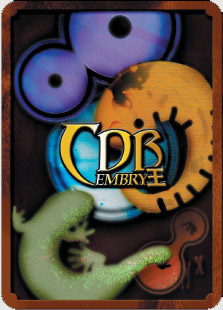
Updated July 10, 2016
The RIKEN Center for Developmental Biology has created a set of game cards illustrating basic concepts, such as embryonic stages of development, cell types, various model organisms used in research, and mutations in the fruit fly Drosophila.
Printed versions of these cards have been distributed to visitors to the CDB Open House as well as at a number of international academic meetings. The data for the cards are now available free of charge for non-commercial use.
Download a PDF file of all 30 game cards plus a two-sided game rules card. To print your own set of cards, open the file, and set your printer for two-sided printing using A4 paper, or [Fit to Page Size] when printing on other sizes of paper. We recommend using heavy card stock when printing.
Sadly, the link to the English version is broken (it downloads the Japanese version). But if you can read Japanese, Spanish, or Portuguese this seems like a nice little game.
Printed versions of these cards have been distributed to visitors to the CDB Open House as well as at a number of international academic meetings. The data for the cards are now available free of charge for non-commercial use.
Download a PDF file of all 30 game cards plus a two-sided game rules card. To print your own set of cards, open the file, and set your printer for two-sided printing using A4 paper, or [Fit to Page Size] when printing on other sizes of paper. We recommend using heavy card stock when printing.
Sadly, the link to the English version is broken (it downloads the Japanese version). But if you can read Japanese, Spanish, or Portuguese this seems like a nice little game.
In Our Time: Echolocation
In Our Time is a wonderful series on BBC Radio 4.
Melvyn Bragg and guests discuss how some bats, dolphins and other animals emit sounds at high frequencies to explore their environments, rather than sight. This was such an unlikely possibility, to natural historians from C18th onwards, that discoveries were met with disbelief even into the C20th; it was assumed that bats found their way in the dark by touch. Not all bats use echolocation, but those that do have a range of frequencies for different purposes and techniques for preventing themselves becoming deafened by their own sounds. Some prey have evolved ways of detecting when bats are emitting high frequencies in their direction, and some fish have adapted to detect the sounds dolphins use to find them.
Melvyn Bragg and guests discuss how some bats, dolphins and other animals emit sounds at high frequencies to explore their environments, rather than sight. This was such an unlikely possibility, to natural historians from C18th onwards, that discoveries were met with disbelief even into the C20th; it was assumed that bats found their way in the dark by touch. Not all bats use echolocation, but those that do have a range of frequencies for different purposes and techniques for preventing themselves becoming deafened by their own sounds. Some prey have evolved ways of detecting when bats are emitting high frequencies in their direction, and some fish have adapted to detect the sounds dolphins use to find them.
Plants: Anatomy, Growth, and Function
I have no resources for this unit.
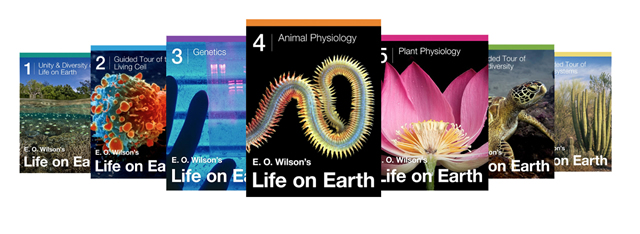

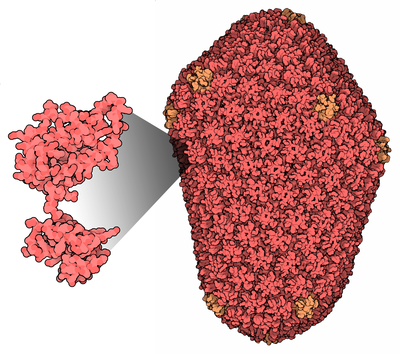
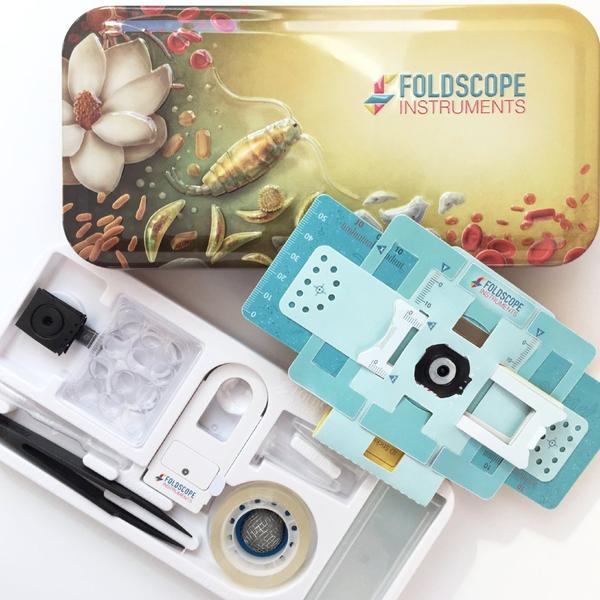
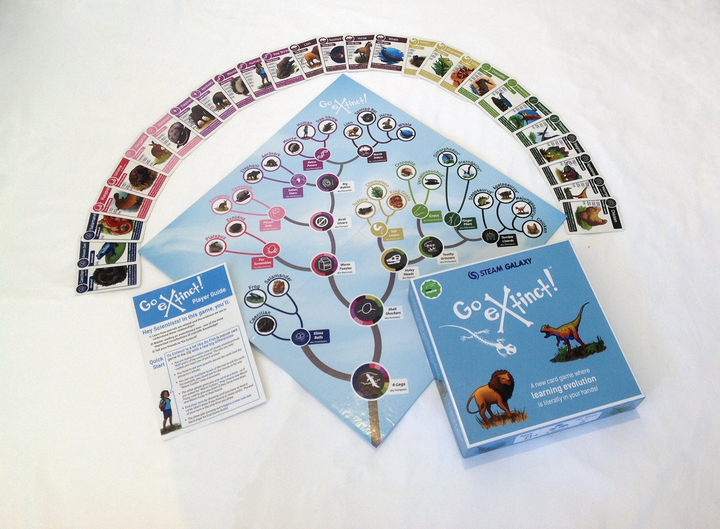
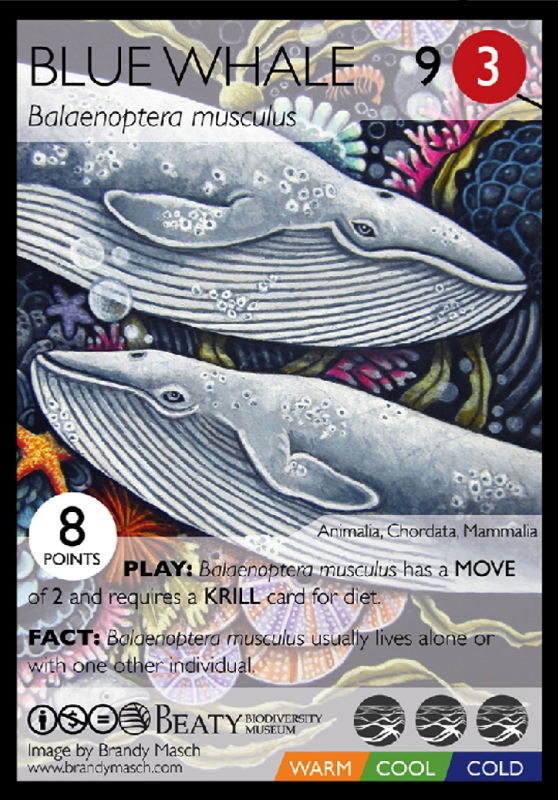
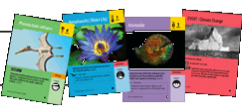
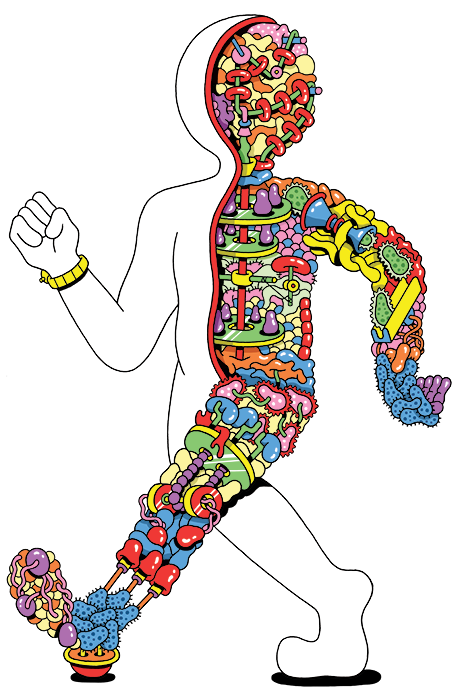
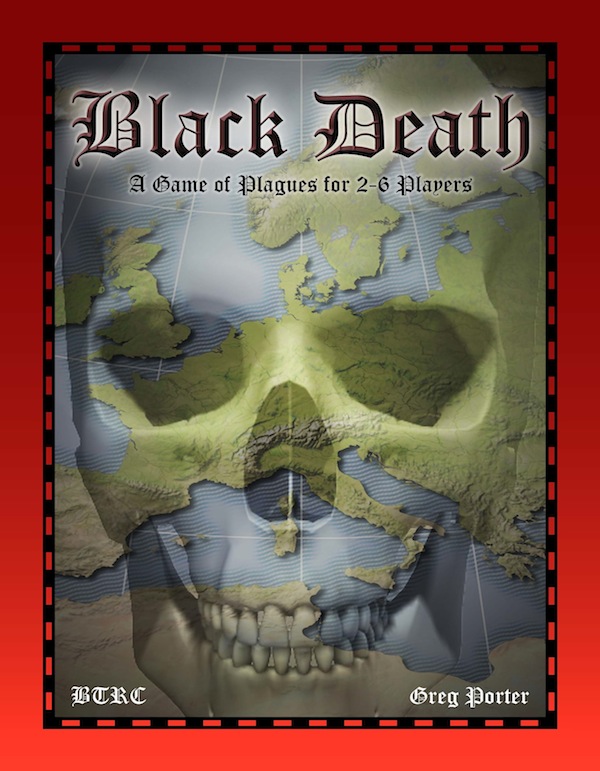
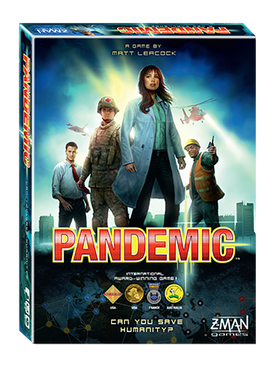
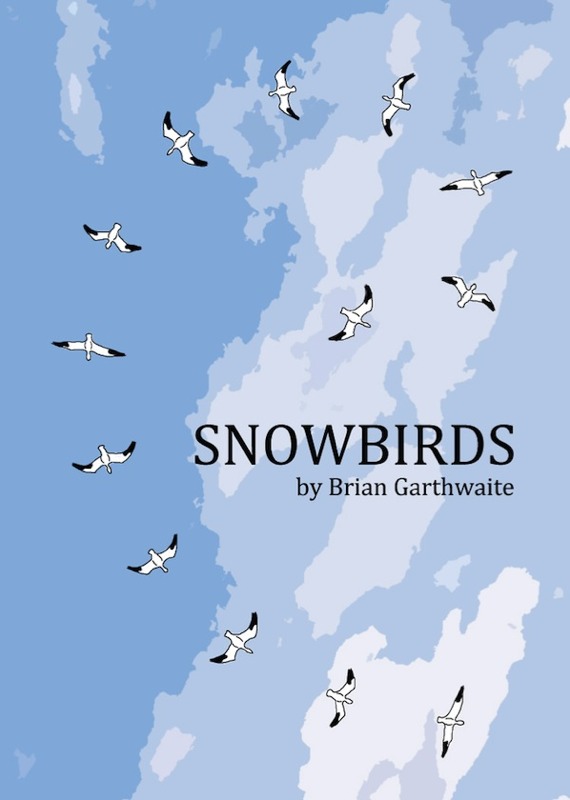
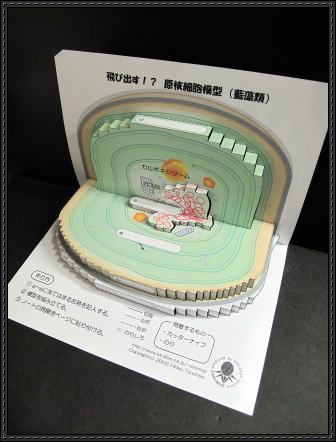
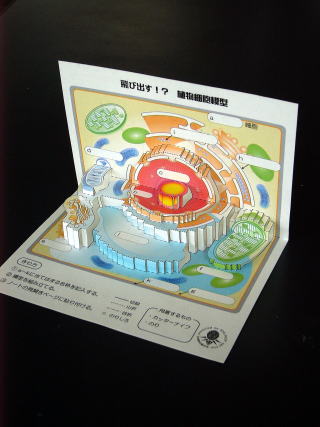
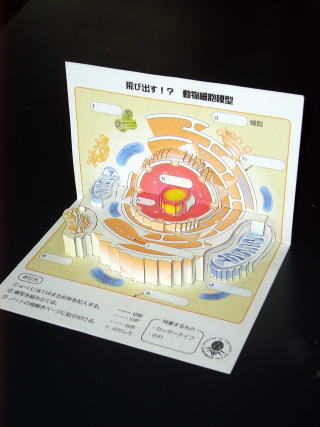
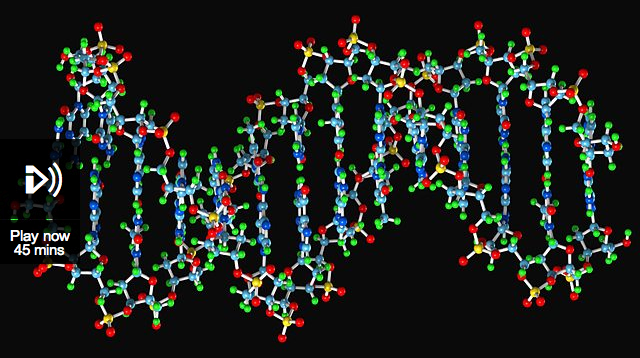
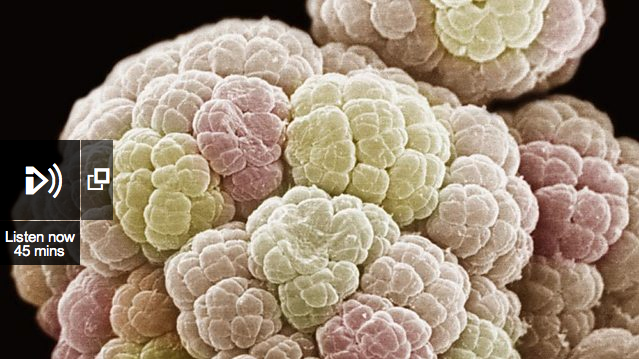
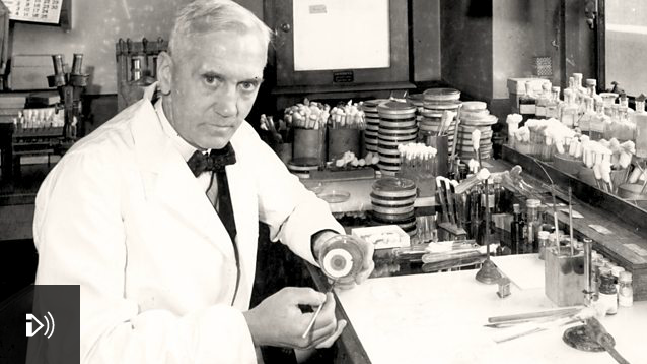
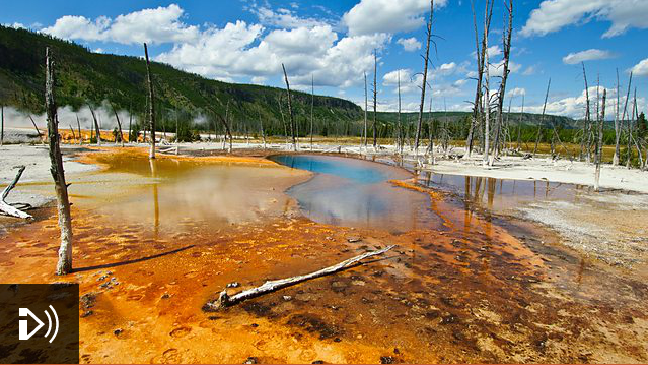
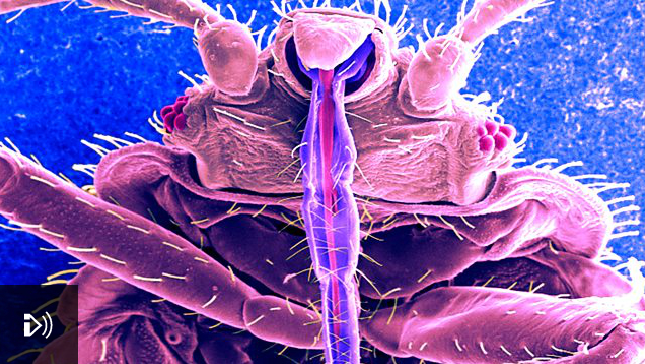
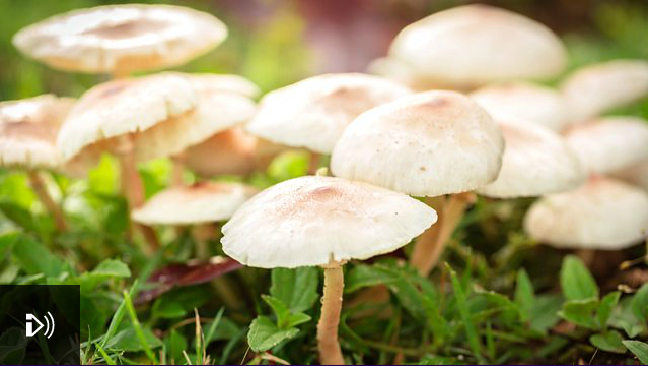
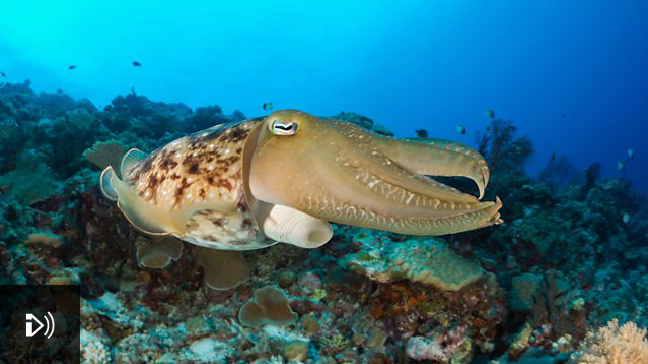
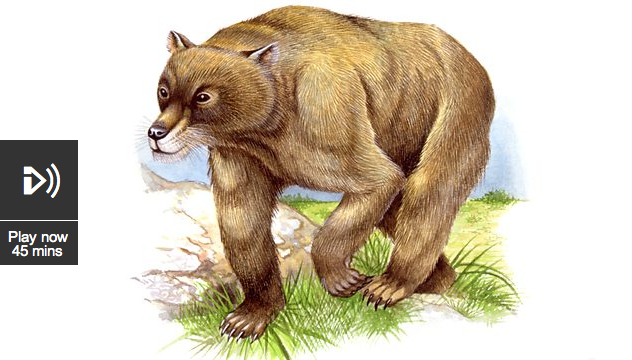
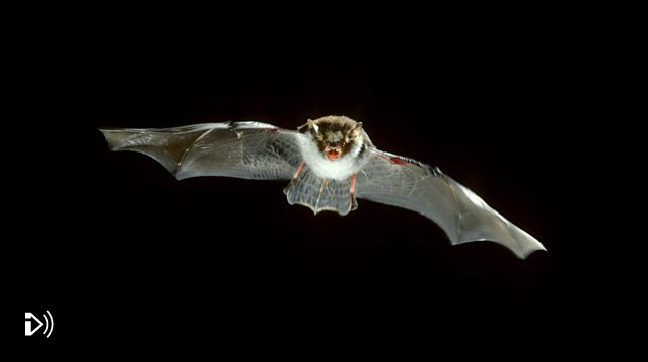
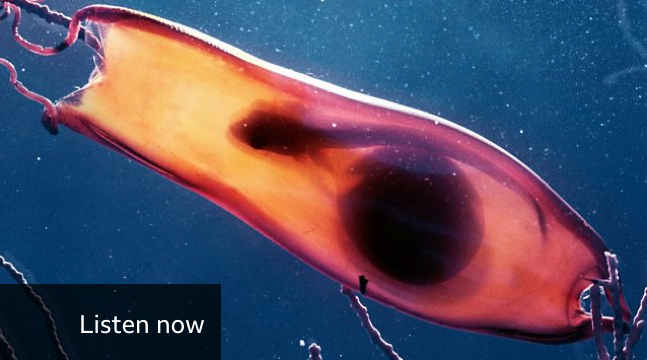
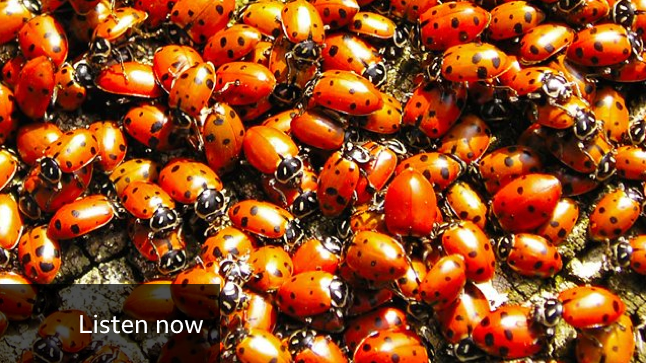
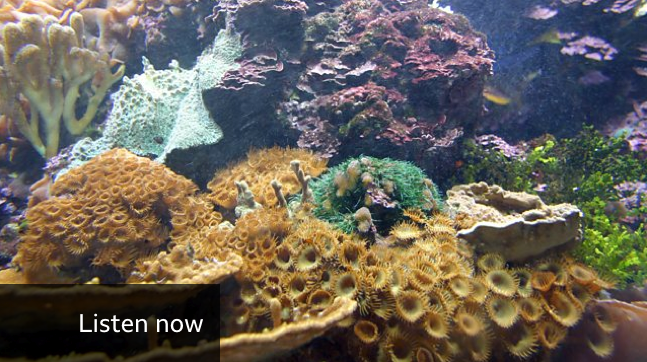
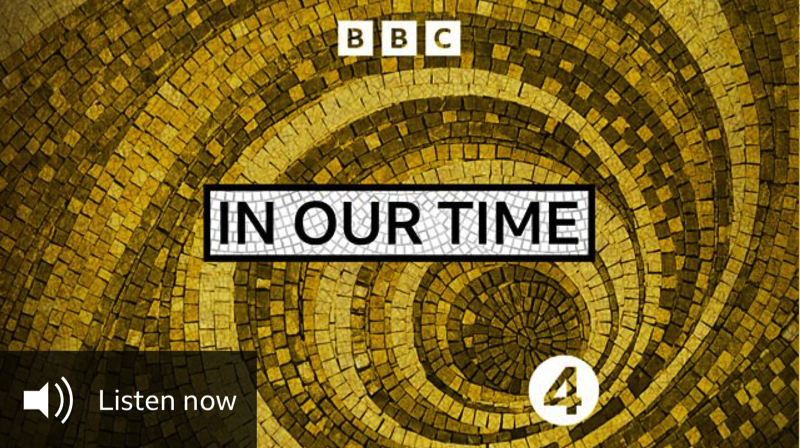
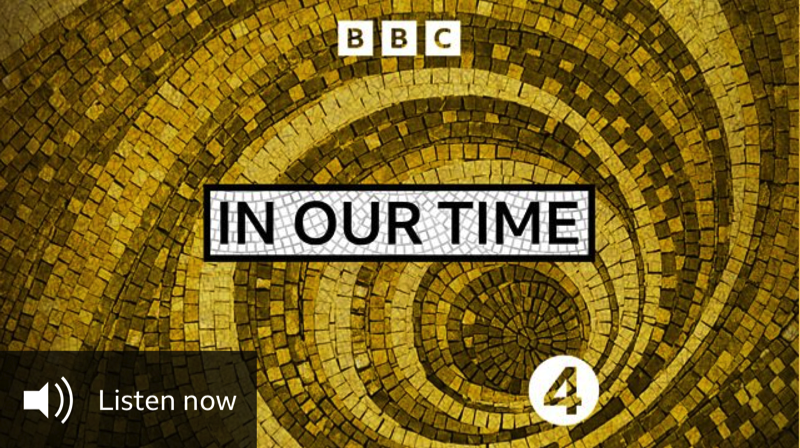
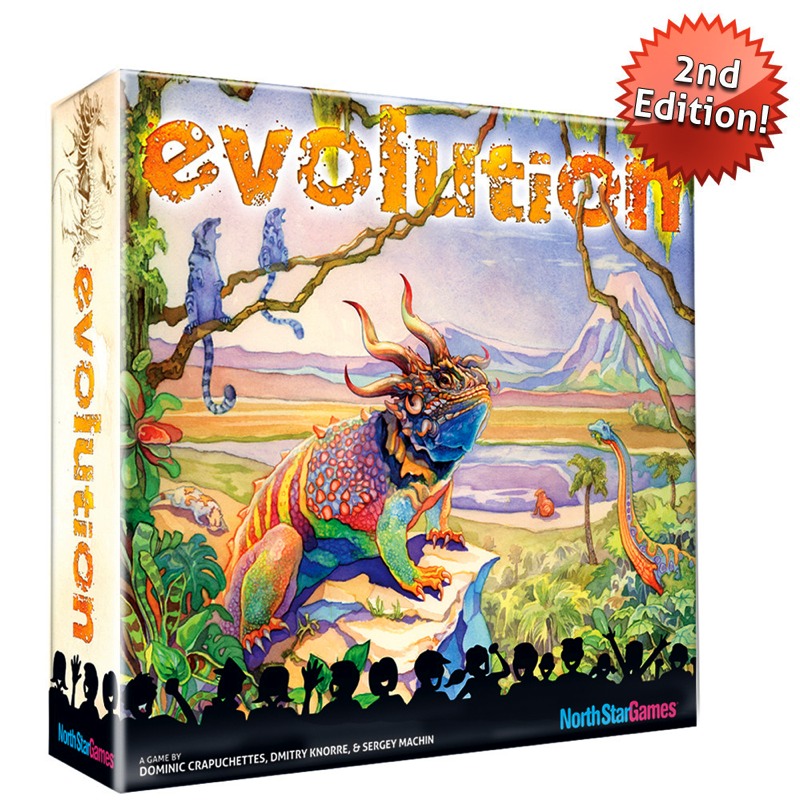
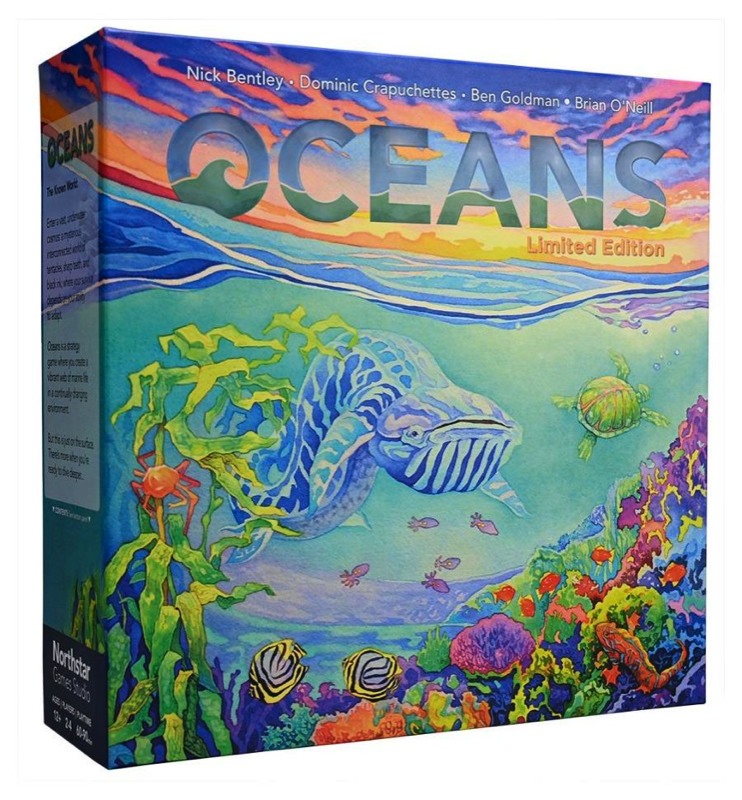
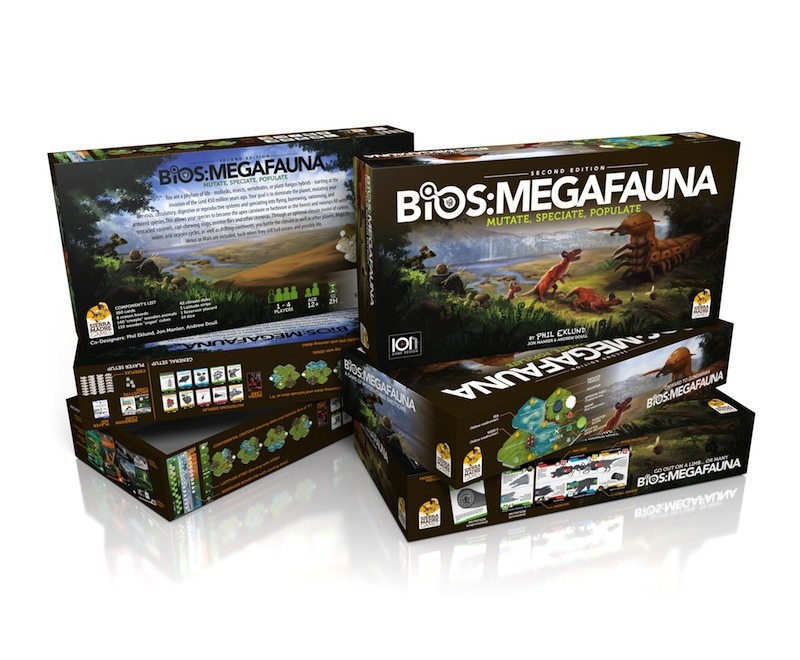
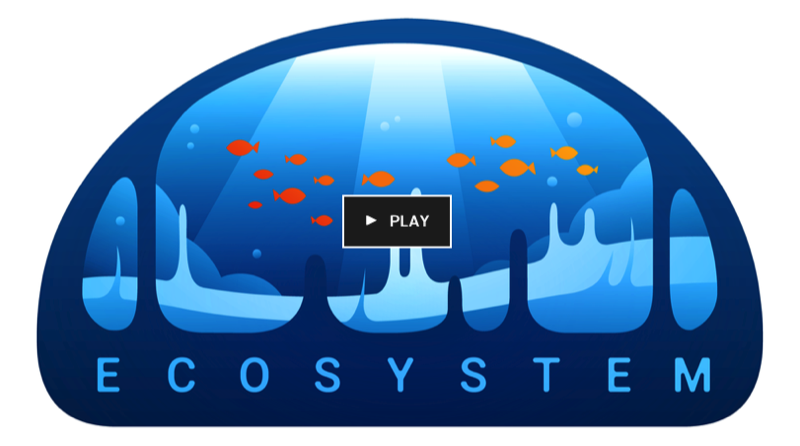
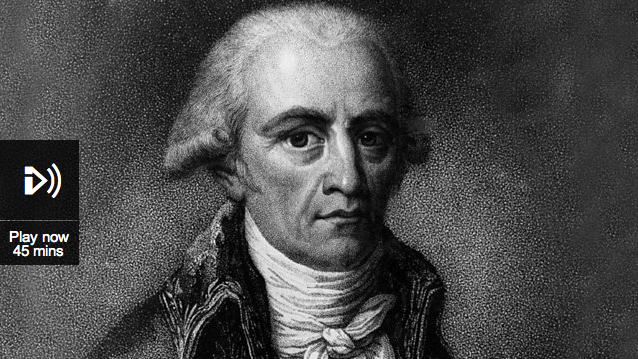
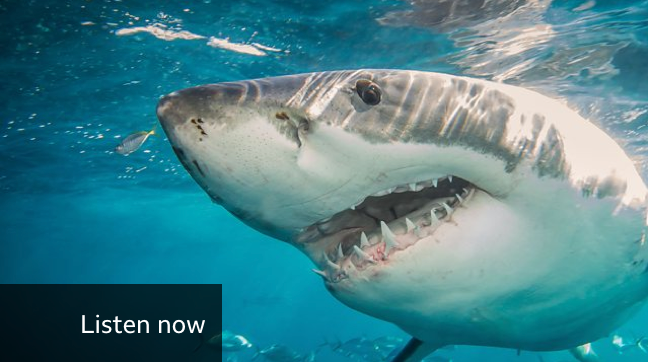
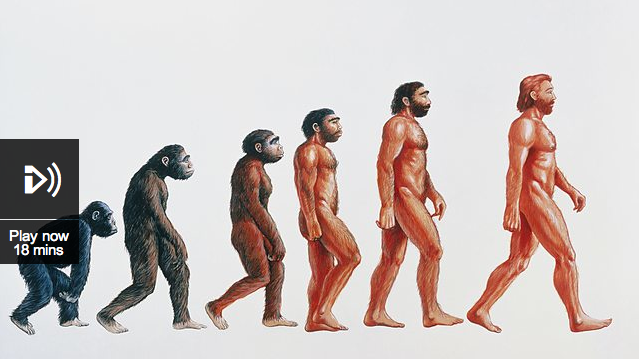
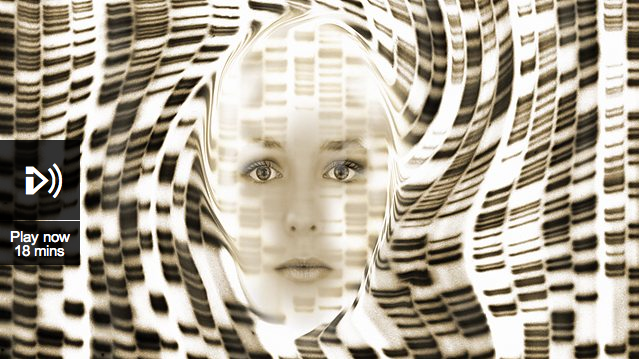

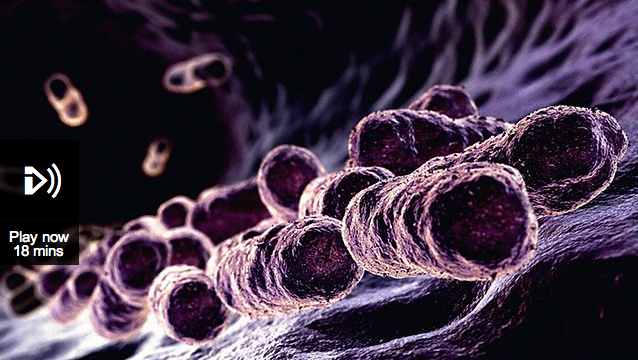
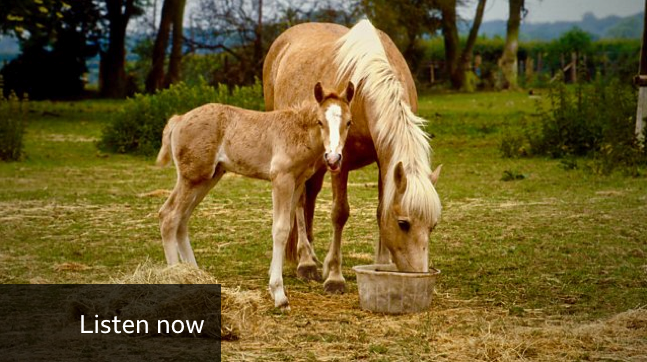
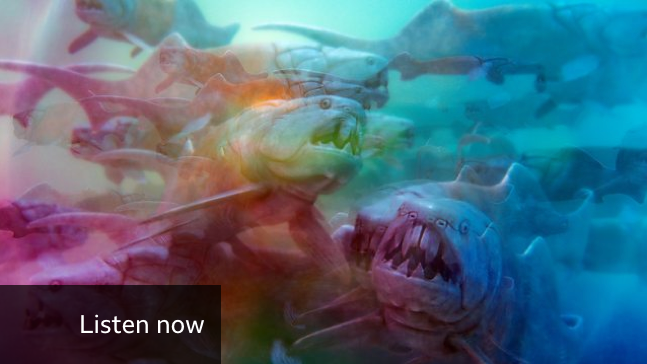
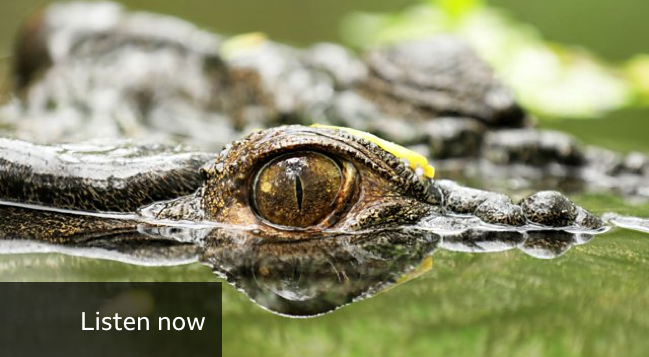
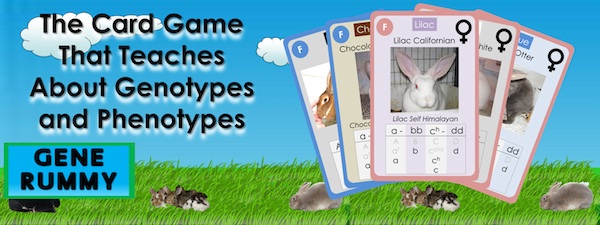
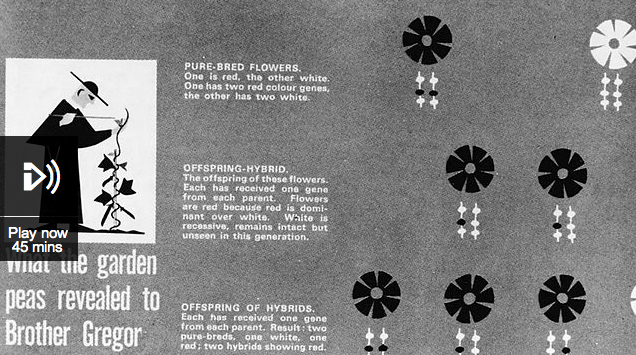
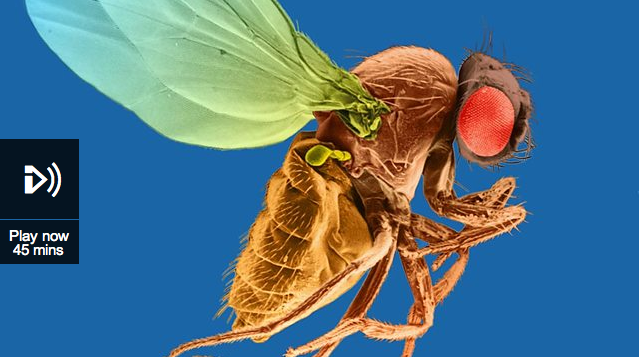
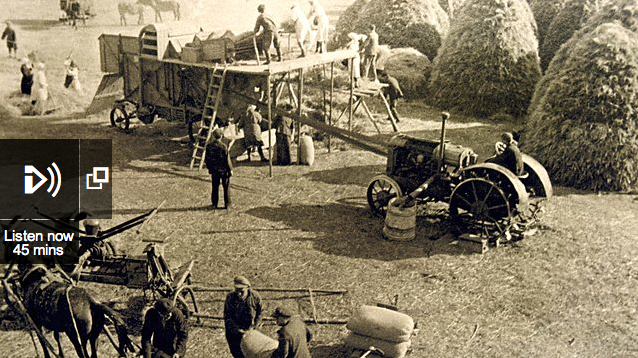
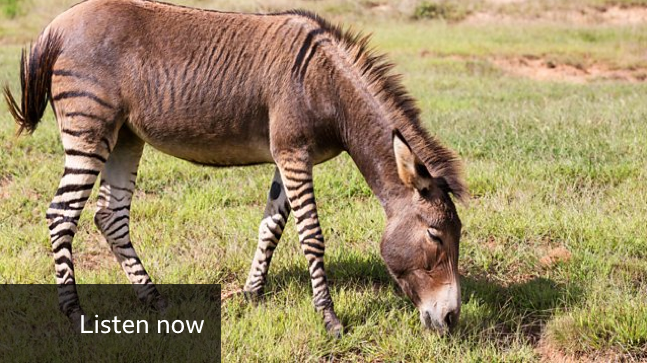
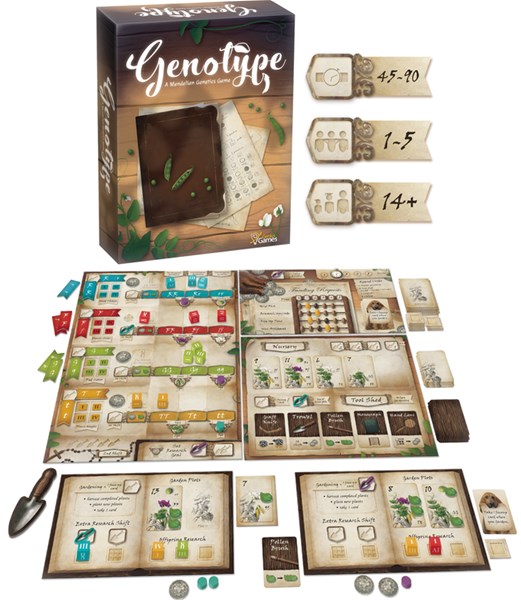
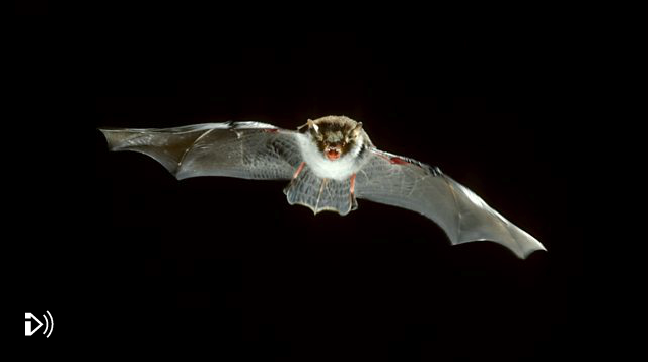
Teaching Science